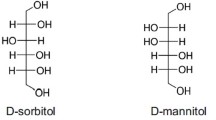Summary
The pharmacodynamic effects of muzolimine and furosemide were compared in a single dose cross-over study in 8 patients on regular dialysis treatment, who had a residual diuresis of more than 300 ml/day. The study periods comprised two dialysis-free intervals of 3 days. On the second dialysis-free day either muzolimine 240 mg or furosemide 240 mg was administered orally. Urine was collected in 12-h periods on the pre-treatment, treatment and post-treatment days, and the excretion of sodium, potassium, urea and creatinine were measured. After administration of muzolimine 240 mg urine volume rose to twice that of the previous day, and sodium excretion increased approximately threefold. In contrast, the effect of furosemide 240 mg was not as pronounced; the diuresis was only 1.6 times that on the previous day and natriuresis was only 2.2 times as large. Excretion of potassium and creatinine was only slightly increased by either substance. The elimination of urea was increased by both substances to the same degree as the corresponding increase in diuresis.
Similar content being viewed by others
References
Berg KH, Jorstadt S, Tromsdal A (1976) Studies on the clinical pharmacology of a newer potent diuretic, BAY g 2821. Pharmatherapeutica 1: 319
Bryce GP, Carter MW (1976) Analyses of non-orthogonal data and categorical data with Rummage. Brigham Young University, Provo, Utah
Heidland A, Klütsch K, Moormann A, Hennemann H (1969) Möglichkeiten und Grenzen hochdosierter Diuretika-Therapie bei hydropischer Niereninsuffizienz. Dtsch Med Wochenschr 94: 1568
Hoppe-Seyler G, Heissler A, Cöppencastrop M, Schindler M, Schollmeyer P, Ritter W (1977) Investigations on the effect of a new diuretic BAY g 2821 in patients suffering from kidney diseases. Pharmatherapeutica 1: 422
Loew D (1976) Diuretic action of BAY g 2821 in oedema-free volunteers. Curr Med Res Opin 4: 455
Loew D, Ritter W, Dycka J (1977) Comparison of the pharmacodynamic effects of furosemide and BAY g 2821 and correlation of the pharmacodynamics and pharmacokinetics of BAY g 2821 (Muzolimine). Eur J Clin Pharmacol 12: 341
Möller E, Horstmann H, Meng K, Loew D (1977) 3-amino-1-(3,4-dichloro-α-methyl-benzyl)-2-pyrazolin-5-one (BAY g 2821), a potent diuretic from a new substance class. Experientia 33: 382
Röckel A (1977) Diuretic effects of BAY g 2821 in patients with advanced renal failure. Curr Med Res Opin 4: 574
Schmidt P, Loew D, Dycka J, Kopsa H, Balcke P, Zazgornik J, Deutsch E (1978) Comparison of the pharmacodynamic effect of muzolimine and furosemide in patients with advanced chronic renal insufficiency. Eur J Clin Pharmacol 14: 399
Cochran WG, Cox GW (1957) Experimental design. 2nd ed. John Wiley, London-New York
Author information
Authors and Affiliations
Rights and permissions
About this article
Cite this article
Schmidt, P., Loew, D., Dycka, J. et al. Comparison of the effects of muzolimine and furosemide in patients with end-stage renal failure on chronic dialysis. Eur J Clin Pharmacol 20, 23–26 (1981). https://doi.org/10.1007/BF00554662
Received:
Revised:
Accepted:
Issue Date:
DOI: https://doi.org/10.1007/BF00554662




